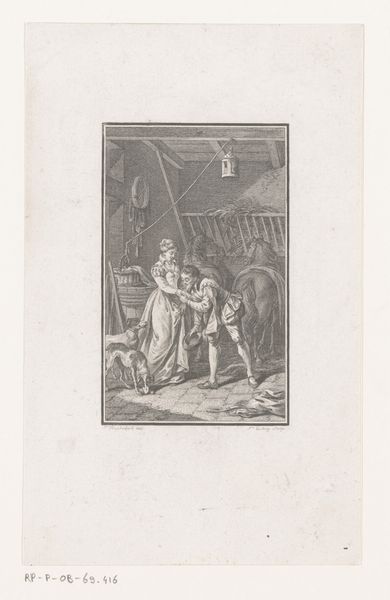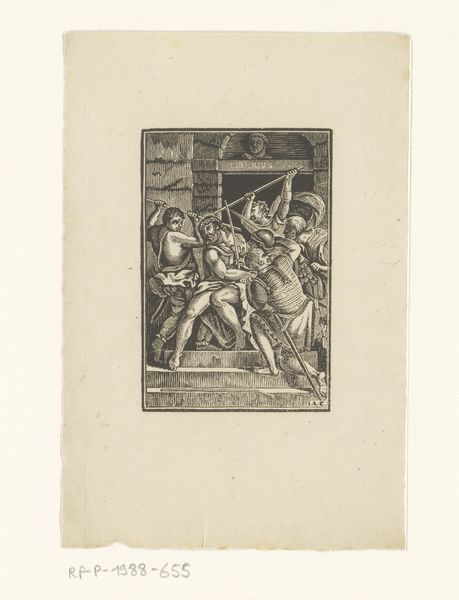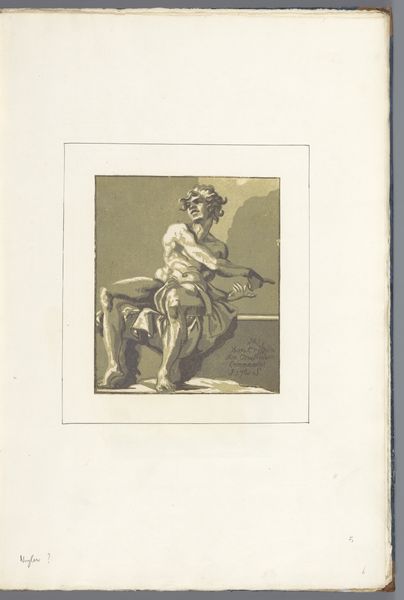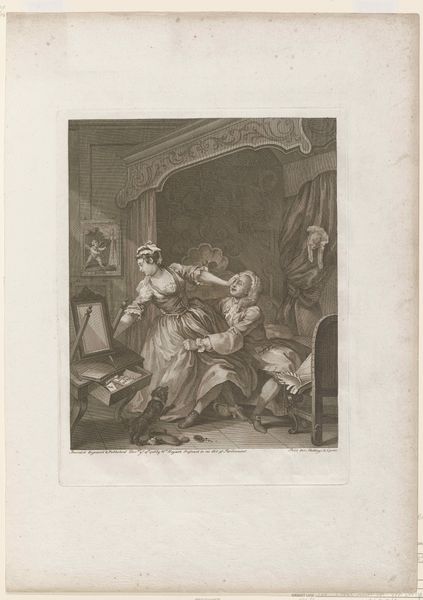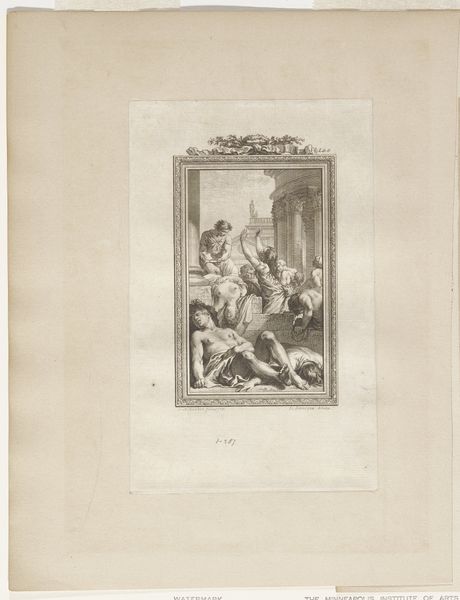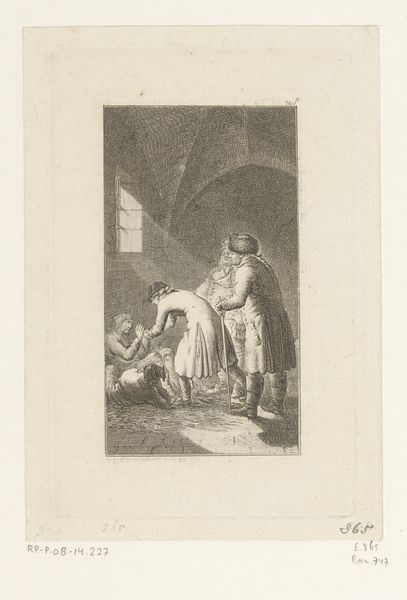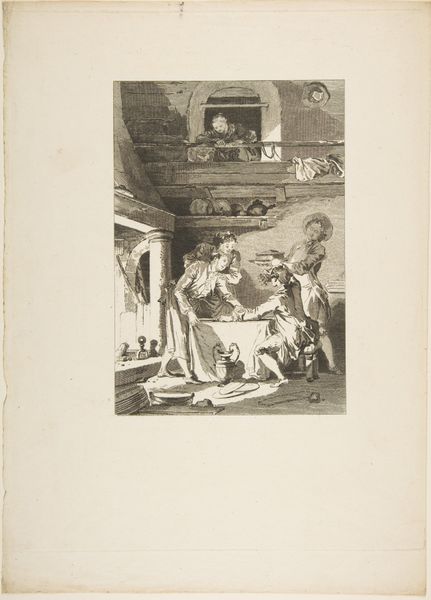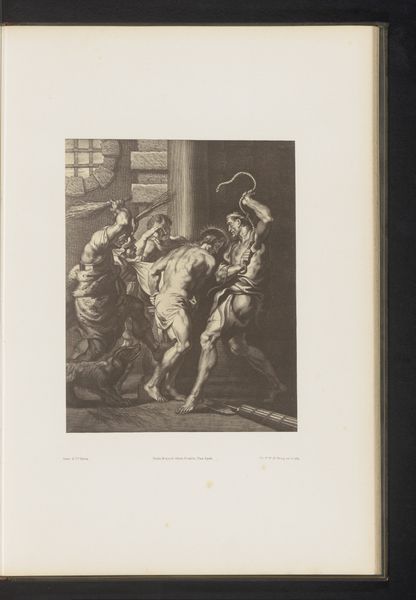
Vignette from the Metamorphesis of Ovid c. 18th century
0:00
0:00
print, etching, engraving
#
baroque
# print
#
etching
#
classical-realism
#
figuration
#
line
#
history-painting
#
engraving
Dimensions: 7 1/2 x 4 7/8 in. (19.05 x 12.38 cm) (plate)10 1/2 x 7 5/8 in. (26.67 x 19.37 cm) (sheet)
Copyright: Public Domain
Curator: This is a fascinating engraving, “Vignette from the Metamorphosis of Ovid,” dating back to the 18th century and attributed to Jacques-Louis Petit. It depicts a scene brimming with dramatic tension. Editor: My initial reaction? There’s such a stark contrast between the polished rendering of the triumphant figure and the agonized twisting form of his defeated opponent, set within the oppressive architecture. Curator: Indeed. The socio-political climate of 18th-century France heavily influenced Neoclassical art, drawing inspiration from antiquity and its emphasis on heroic virtue and rational order. Works like these would have resonated with ideas circulating about citizenship, power, and even morality. Editor: Yes, you can feel the influence. The artist uses strong, controlled lines to define the muscularity of the figures and create a palpable sense of weight and solidity, a classical ideal, which I find somewhat softened by the dramatic diagonals. And what’s your read on the use of light here? Curator: Light certainly serves a vital role, theatrical almost! We have stark light on the victor and then deep shadows across his victim. This, I suspect, invites the viewer to take sides in a narrative imbued with contemporary societal ideals of dominance. It suggests a moral position. Editor: True, but visually the light is so much more than propaganda. It highlights not just power, but also, oddly, vulnerability in the victor's stance. He’s exposed and yet triumphant; I am uncertain of him. Does this moral aspect also speak to the politics of imagery in Parisian printmaking circles at the time? Curator: Absolutely. Engravings and prints played a critical role in disseminating ideas and images amongst a broader audience, allowing these historical and mythological subjects to reinforce existing social hierarchies or even to subtly challenge them. This also raises the artist, Petit, who would have benefited from commissions of such art. Editor: It's fascinating how this small etching can offer such insight into both the artistry and the social forces at play in the 18th century. I see now how this detailed line work builds toward something more significant, more charged than merely a scene from Ovid. Curator: Precisely. Studying how artworks circulated then—and how they shape narratives even now—gives context and allows for new connections and insights. Editor: A testament to how formal analysis, linked to larger questions, always brings so much richer meaning to visual artworks.
Comments
No comments
Be the first to comment and join the conversation on the ultimate creative platform.

